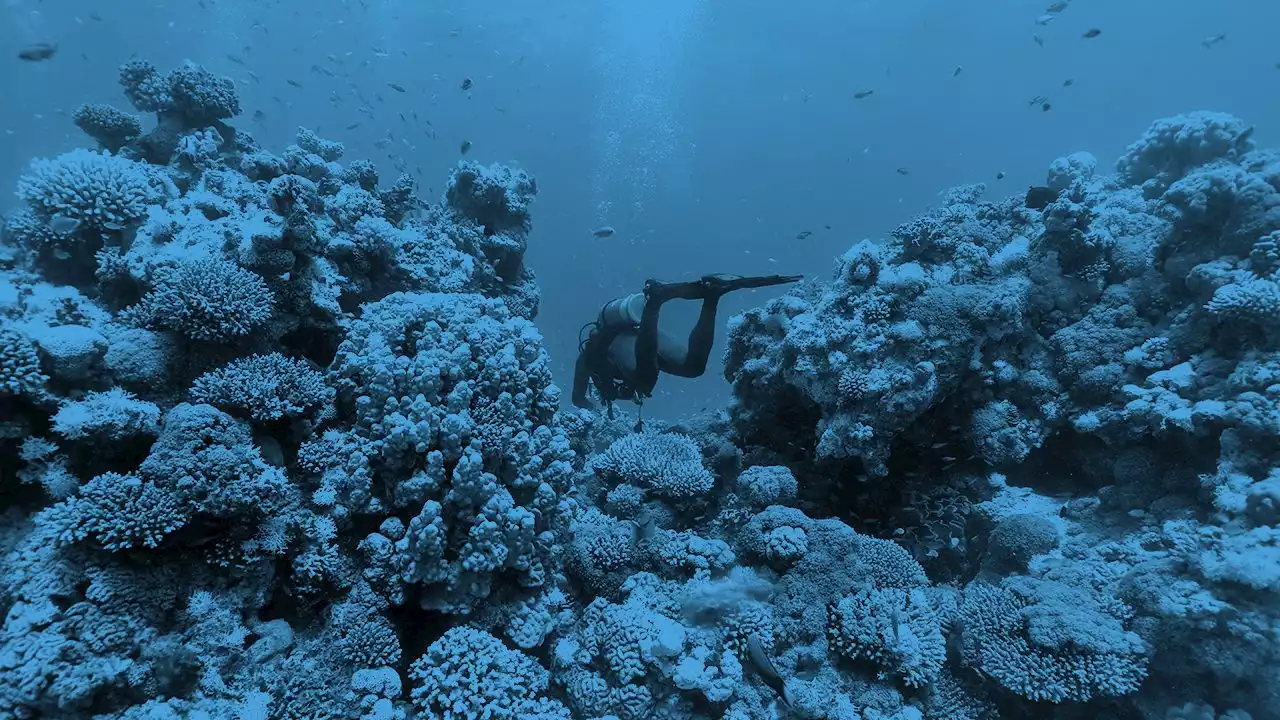A bit of pre-emptive tinkering by people might help to save them
news that coral reefs are in hot water. Corals, which are sessile animals related to sea anemones, host within their tissues algae that provide them with both food and their tourist-attracting colours. But as temperatures rise, the photosynthetic mechanisms of these algae go haywire. Instead of molecular oxygen, the normal waste product of photosynthesis, they start generating highly reactive and therefore toxic oxygen-rich compounds, such as peroxides.
Locally, things can be yet more dramatic. In just three years Australia’s Great Barrier Reef lost more than 30% of its corals to death-by-bleaching. Surveys conducted this March showed that another Barrier Reef bleaching event is now under way. This instance is particularly worrying because it is the first to take place during a Pacific cooling event called La Niña—rather than during either its warming opposite, El Niño, or an intermediate period between the two.
Similar pockets of heat resistance might be expected to have evolved elsewhere, too. Anne Cohen of the Woods Hole Oceanographic Institution, in Massachusetts, is responsible for a newly launched project which sets out to identify “super reefs” of this sort around the world. Using a mix of genetic analysis and hydrologic modelling, she aims to find reefs that are heat-resistant and genetically diverse, and therefore potentially able to restore neighbouring bleached sites to their former glory.
Further evidence points in that direction, too. In 2020 Phillip Cleves of Stanford University published work which showed that knocking out one particular gene in a species calledsignificantly reduces its ability to withstand heat. If resilience genes like these could be catalogued, and their presence identified in the field, that would allow researchers to identify resilient corals much more quickly thancan.
Even if the algae cannot be pressed into service in this way, though, other microscopic organisms living within a coral might be. Microbiomes—the collectives of bacteria, fungi and viruses that cohabit with most animals, especially in their guts—are now taken seriously as physiological influencers.
Deutschland Neuesten Nachrichten, Deutschland Schlagzeilen
Similar News:Sie können auch ähnliche Nachrichten wie diese lesen, die wir aus anderen Nachrichtenquellen gesammelt haben.
 How can corals withstand ever-warming seas?“It's really exciting to talk to researchers who, after decades of pessimism, are starting to see the light at the end of the tunnel.” gileadamit on the possibility of harnessing resilient corals against warming sea temperatures
How can corals withstand ever-warming seas?“It's really exciting to talk to researchers who, after decades of pessimism, are starting to see the light at the end of the tunnel.” gileadamit on the possibility of harnessing resilient corals against warming sea temperatures
Weiterlesen »
 How can corals withstand ever-warming seas?“It's really exciting to talk to researchers who, after decades of pessimism, are starting to see the light at the end of the tunnel.” gileadamit on the possibility of harnessing resilient corals against warming sea temperatures
How can corals withstand ever-warming seas?“It's really exciting to talk to researchers who, after decades of pessimism, are starting to see the light at the end of the tunnel.” gileadamit on the possibility of harnessing resilient corals against warming sea temperatures
Weiterlesen »
 Partygate fine does not mean Johnson broke ministerial code, says RaabJustice secretary says Johnson only ‘unintentionally’ broke law as ethics adviser reportedly threatens to quit
Partygate fine does not mean Johnson broke ministerial code, says RaabJustice secretary says Johnson only ‘unintentionally’ broke law as ethics adviser reportedly threatens to quit
Weiterlesen »
 Wales warm up for World Cup play-off final with Nations League defeat to PolandJakub Kaminski and Karol Swiderski struck in the final 18 minutes to turn the game on its head after Jonny Williams’s opener
Wales warm up for World Cup play-off final with Nations League defeat to PolandJakub Kaminski and Karol Swiderski struck in the final 18 minutes to turn the game on its head after Jonny Williams’s opener
Weiterlesen »
 Socceroos come from behind to beat Jordan in World Cup qualifier warm-upA brace of set-piece goals enabled the Socceroos to warm up for next week's World Cup play-off with a 2-1 win over Jordan in Qatar
Socceroos come from behind to beat Jordan in World Cup qualifier warm-upA brace of set-piece goals enabled the Socceroos to warm up for next week's World Cup play-off with a 2-1 win over Jordan in Qatar
Weiterlesen »
 Tickled ink: Virgin Atlantic allows cabin crew to display tattoosExclusive: Airline becomes first in UK, and first big global carrier, to allow visible body art
Tickled ink: Virgin Atlantic allows cabin crew to display tattoosExclusive: Airline becomes first in UK, and first big global carrier, to allow visible body art
Weiterlesen »
